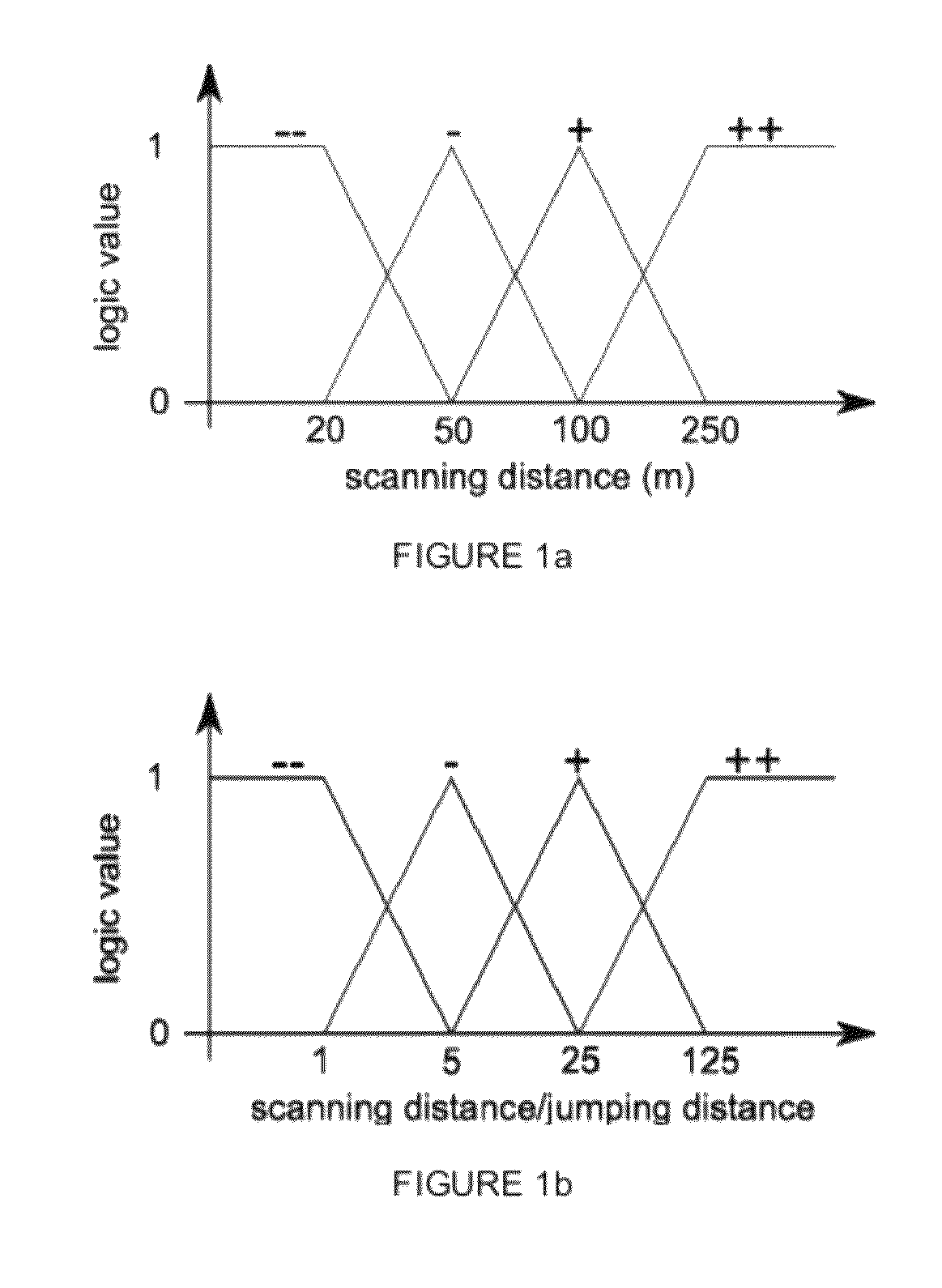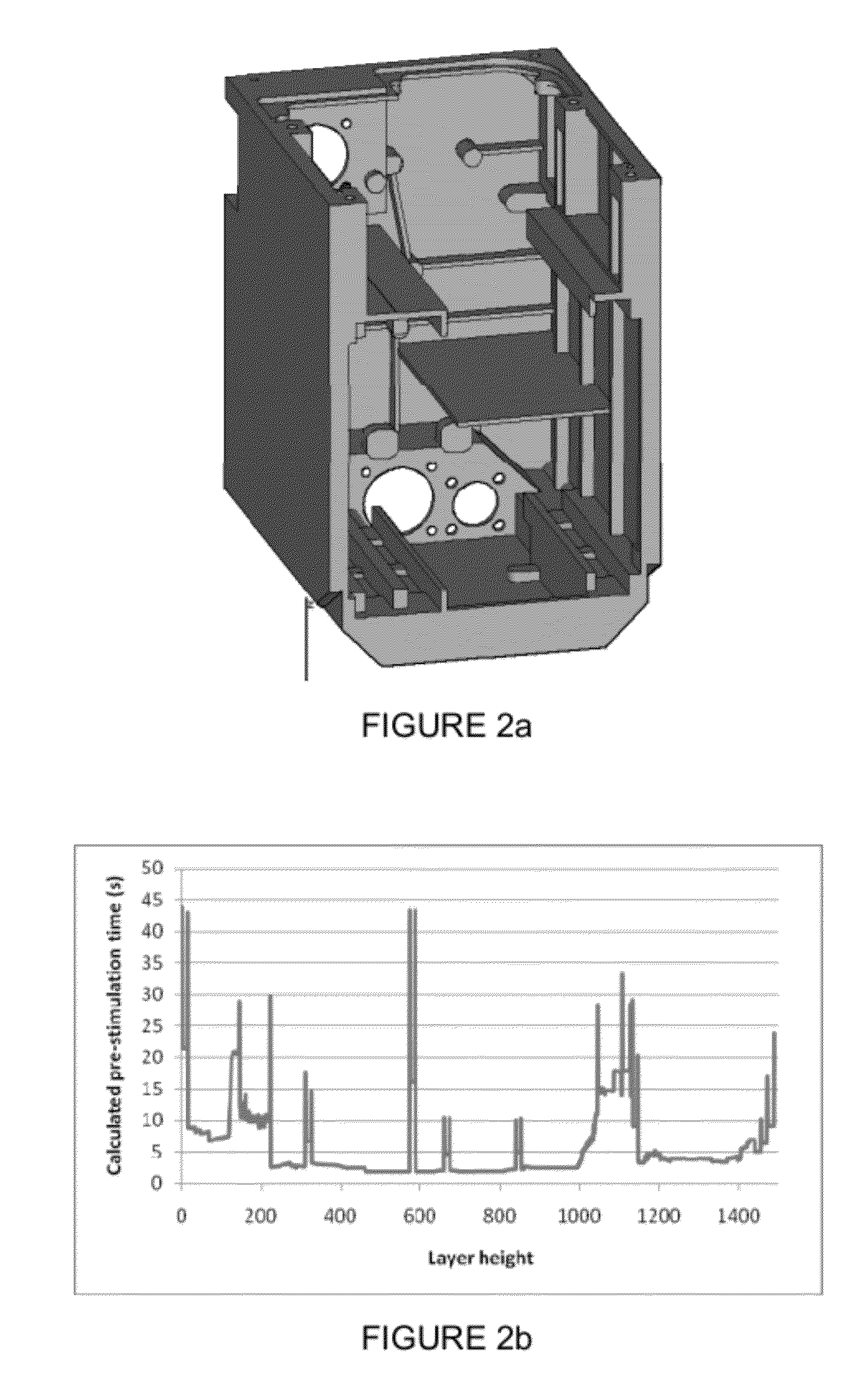Method for reducing differential shrinkage in stereolithography
a stereolithography and differential shrinkage technology, applied in the field of stereolithography method and system, can solve the problems of differential shrinkage, distortion of cad designed dimensions of objects built using stereolithography, polymerization and hardening of resin on illuminated areas, etc., to achieve large reproduction accuracy, reduce differential shrinkage, and increase strength
- Summary
- Abstract
- Description
- Claims
- Application Information
AI Technical Summary
Benefits of technology
Problems solved by technology
Method used
Image
Examples
example 1
[0157]The present example describes a particular embodiment according to the present invention wherein the pre-stimulation waiting time (Tp) is determined according to Formula II for a P equal to Pref and a resin scaling factor of 1 and wherein Tst is determined by the following fuzzy system:
[0158]
TABLE 1Scan distance logic valueVery highHighLowVery lowRatio of Scan distance overVery++++++jump distance logic valvehighHigh++00Low−00−Very−−−−−−−−low
[0159]Wherein the Fuzzy logic value corresponds with:
[0160]
TABLE 2Fuzzy+++0−−−Time (s)30201050
[0161]The matrix is to be interpreted as:
[0162]If the scan distance logic value is very high and the ratio of scan distance over jump distance is very high then the time is ++, if the scan distance is high and the ratio of scan distance over jump distance is very high then the time is ++, if the scan distance is low and the ratio of scan distance over jump distance is very high then the time is +, . . . .
[0163]The relation between the fuzzy logic v...
example 2
[0164]To aid the understanding of the present invention and to show the strengths of the system, several example geometries are presented for which the pre-stimulation waiting time to be used for the next layer is calculated according to example 1 and assuming all layers are built using a fixed stimulation power. Four geometries are used and for one of the geometries two separate vector types have been used (skin fill and hatching).
[0165]
TABLE 3Geometry200 × 200200 × 20010 × 20040 × 5010 × 10mmmmmmmmmmSkin fillHatchHatchHatchHatchPre-stimulation603012.914.30time (s)
[0166]As can be seen areas susceptible to differential shrinkage are identified and give rise to increased waiting times.
[0167]Whereas for simple geometries a person skilled in the art might assign several ranges of pre-stimulation waiting times, for complex parts individually determined pre-stimulation waiting times covering a continuous range of possible times cannot be obtained in this way. An example of such complex p...
example 3
[0168]Analogous to example 2 several example geometries are presented for which the suggested stimulation powers to be used in this layer are calculated assuming fixed pre-stimulation waiting times for all layers.
[0169]
TABLE 4Geometry200 × 200200 × 20010 × 20040 × 50mmmmmmmm10 × 10 mmSkin fillHatchHatchHatchHatchStimulation50100218194500power (mW)
[0170]For the complex part shown in FIG. 2a the stimulation powers for all of the individual layers of the example part are shown in FIG. 2c assuming a fixed pre-stimulation waiting time for all layers.
PUM
| Property | Measurement | Unit |
|---|---|---|
| time | aaaaa | aaaaa |
| time | aaaaa | aaaaa |
| shrinkage | aaaaa | aaaaa |
Abstract
Description
Claims
Application Information
 Login to View More
Login to View More - R&D
- Intellectual Property
- Life Sciences
- Materials
- Tech Scout
- Unparalleled Data Quality
- Higher Quality Content
- 60% Fewer Hallucinations
Browse by: Latest US Patents, China's latest patents, Technical Efficacy Thesaurus, Application Domain, Technology Topic, Popular Technical Reports.
© 2025 PatSnap. All rights reserved.Legal|Privacy policy|Modern Slavery Act Transparency Statement|Sitemap|About US| Contact US: help@patsnap.com



